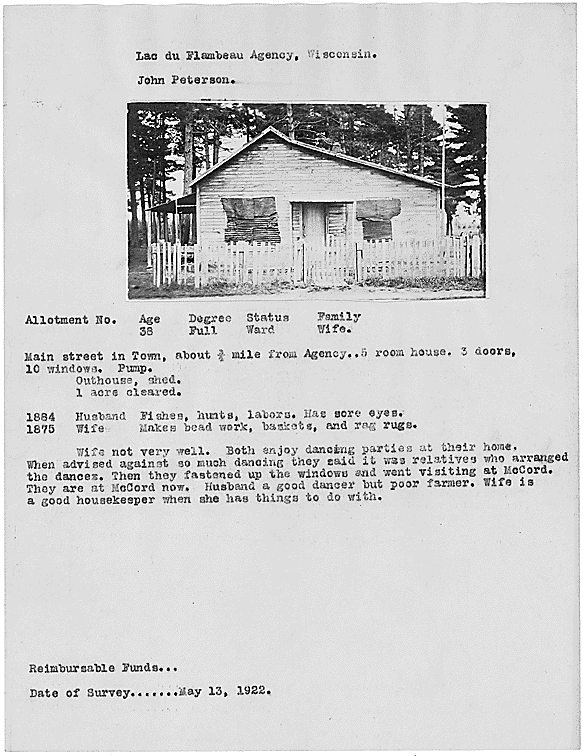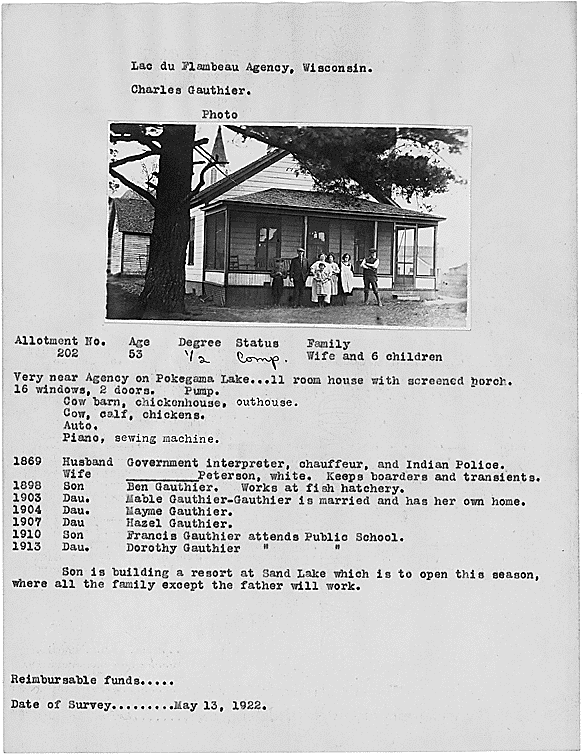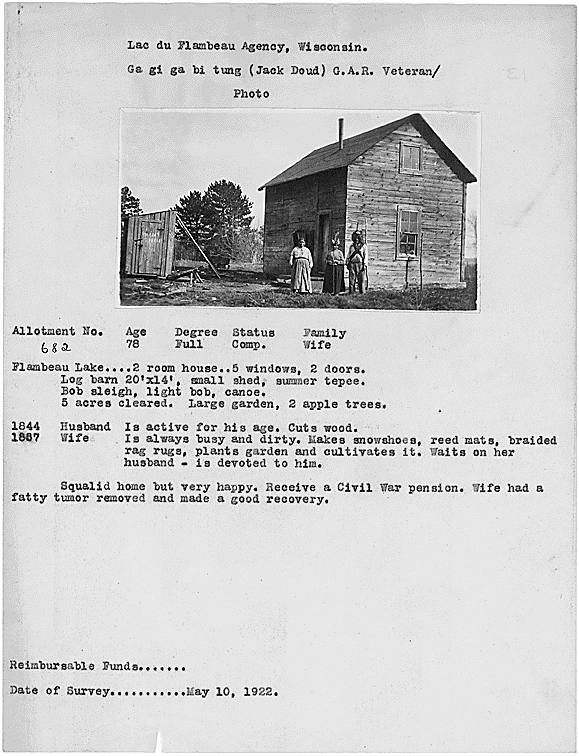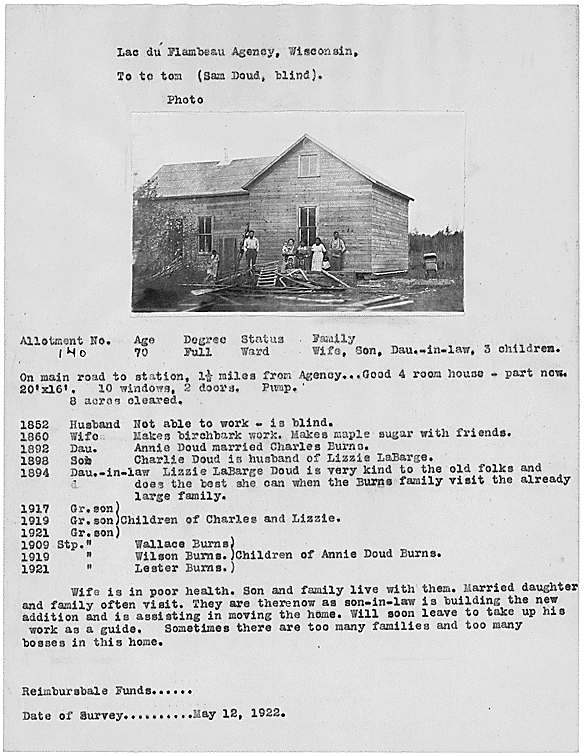How the Government Monitored Life on a 1920s Reservation
The Vault is Slate's history blog. Like us on Facebook, follow us on Twitter @slatevault, and find us on Tumblr. Find out more about what this space is all about here.
These 1922 documents assess the living situations of Chippewa families living on the Lac du Flambeau reservation in Wisconsin. Compiled by the Lac du Flambeau superintendent, J.W. Balmer, the sheets were submitted to the Commissioner of Indian Affairs in Washington as part of a larger report.
The sheets, which recount particulars of each family’s life, perform the function of a makeshift census, collecting names and birth dates of the resident in each home. They allow us to glimpse the quality of housing stock and amenities and glean some information about the health of the people living on the reservation. But in their assessments of family dynamics, work habits, and recreational choices, the reports also reflect the paternalism of the reservation system at the time.
The informal census was meant to gather evidence of living conditions and to report on hope for future assimilation. To that end, even the families noted as “Comp.” (competent) rather than “Ward,” such as the household of Ga gig a bi tung (or Jack Doud), were subject to criticism: “Wife is always busy and dirty…Squalid home but very happy.”
A 1924 account of life at Lac du Flambeau contained an extensive report authored by Balmer. In it, he recounts efforts to teach “morality” and “citizenship,” including initiatives intended to entice residents away from their traditional entertainments:
The older Indians still indulge in their religious dances, which they are allowed to do on condition that they are held at a time when they will not interfere with the planting of their gardens or their farming operations. As a method of combatting the dancing, the Indians of the reservation are invited to attend moving-picture programs of an educational and entertaining nature, which are held at the reservation boarding-school once a week.
This attempt to remake Native American cultures in the image of white “Americanism,” which had dominated the government’s approach since the mid-19th century, would weaken somewhat in the coming years. John Collier, the Commissioner of Indian Affairs starting in 1933, pushed for tribal self-government while idealizing (some would say romanticizing) the “old ways.”




